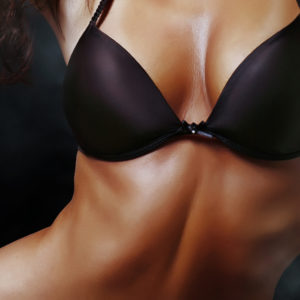 If you’re thinking about having breast augmentation with Dr. Lavey, there are many decisions you’ll need to make, and you should be doing some research into the various, choices available to you such as incision location and implant type.
If you’re thinking about having breast augmentation with Dr. Lavey, there are many decisions you’ll need to make, and you should be doing some research into the various, choices available to you such as incision location and implant type.
When you’re considering your implant type, the option has been saline or silicone, but over the past few years, a new option has become available — the gummy bear implant. To help you know if these are implants for you here’s some information about them.
What is a gummy bear implant?
If you’ve been researching implant options, you may have already looked into gummy bear implants. These implants retain their shape, unlike other implant choices, because the gel is thicker than traditional silicone implants. In addition to “gummy bear implants,” they are also known as cohesive, form-stable, or highly cohesive. These terms denote the attributes of these implants made by three companies: Sientra, Allergan, and Mentor. Sientra had temporarily halted production but was given FDA approval for its gummy bear offerings, along with eight other new implants in December 2016.
Cohesive silicone gel
Today’s silicone gel used is much more “cohesive” than that used in silicone implants of the 80s and early 90s. Only the most cohesive, i.e. thicker, are deemed to be “gummy bear implants.” To get an idea of the density, if a cohesive implant is cut in half, there is no gross movement of gel, and the implant maintains its shape.
Teardrop shape
Other types of implants are mostly round. But cohesive breast implants are anatomically shaped to match the natural breast, which projects more at the bottom than at the top. The teardrop shape is thinner at the top, filling out more at the bottom. This shape maintains itself due to the thicker nature of the cohesive gel. This is one advantage of these types of implants.
All gummy bear implants are also textured. This texturing increases friction and helps keep the implants from rotating. This is very important because these implants are different at the bottom and the top, so maintaining their position is a necessity.
Are they safe?
Sientra cites five years of study with its gummy bear implants. Here are some statistics.
- Low rate (3.9%) of capsular contracture
- Over 98% rupture-free through five years
- Zero reported incidences of implant rotation
You do have to remember, though, that gummy bear implants are still relatively new, so there are no long-term studies about their durability. Like traditional implants, gummy bear implants can rupture, although the gel tends to stay close to the implant. Rippling is far less prevalent with cohesive implants than with traditional silicone implants, although this is usually related to how much tissue is atop the implant.
While doing your research on implants types, please include gummy bear implants. Then, if you have any further concerns, call Dr. Lavey at 925-820-3633.








No comments yet.